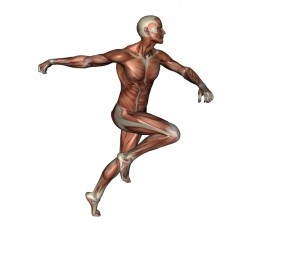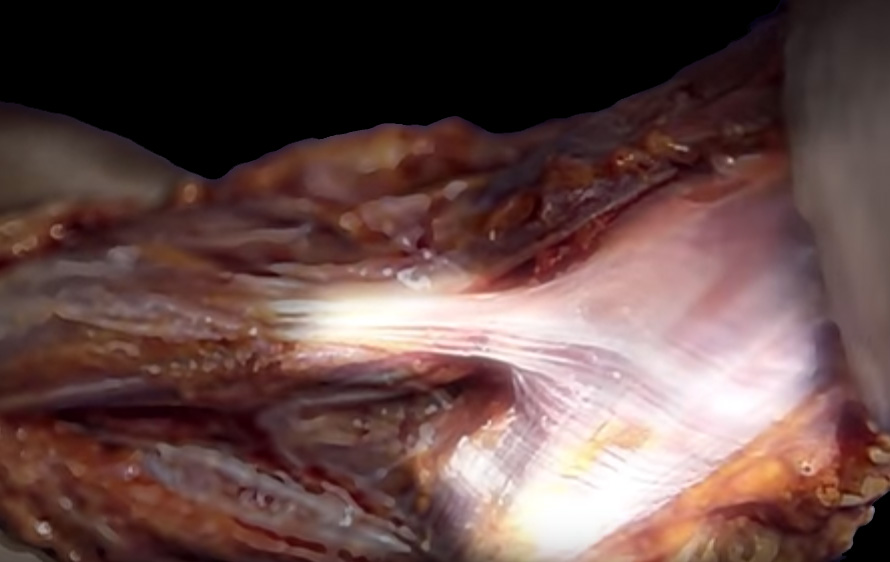Fascia: A Body-wide Organ
Fascia: A Body-wide Organ by Paolo Tozzi, MSc Ost, DO, PT
Despite some current/old trends to distinguish fascial tissue in its bits and pieces, as if it is a death tissue to be dissected and named in its components (Stecco, 2014), nowadays fascia is always more intended from different profession as a body-wide structure that permeates, supports, suspends and connects the entire organism. The old view of fascia consisting of different superimposed layered, gliding on each other, is now gradually being replaced by a broader perspective that considers this ‘fascinating’ tissue in the light of the interaction of its structure and function; as a body-wide organ at different depths of differentiation; as a single architecture at various levels of form and complexity (Guimbertau, 2012). In other terms, fascia is finally starting to be intended as it truly is and has always been in nature: an ubiquitous, living, dynamic, pulsating and coherent whole.
As suggested by the work of Blechschmidt and Gasser (2012), each constituent of the connective tissue in the body presents a functional and anatomical continuity, due to the common embryologic origin from the mesoderm. However, loading demands acting through and upon tissues, may determine their differentiation, influencing fibres arrangement, length, and density. Nevertheless, despite tissues seem to specialize in response to mechanical forces, their structural and functional interconnection is always maintained at each stage of embryological and foetal development. This requires an alternative architectural view of the body, than the traditional division of muscles, ligaments and bones.
By investing each tissue at all levels, fascia displays a three-dimensional arrangement that shapes and moulds every body constituent, being as such referred to as an ‘organ of form’ (Varela and Frenk, 1987). In fact, it embodies the element of structural interconnectedness in the organism, by surrounding, pervading, and connecting all body constituents, and yet allowing sliding and gliding motions at the same time. Interestingly, due to its phenomenological dimension of ‘in between’ the ‘outer’ (skin) and the ‘inner’ (visceral endothelium) boundaries of the body, it has also been referred to as the ‘organ of innerness’ (Van der Wal, 2014). Such body wide organ raises from the structural continuum between the musculoskeletal and connective tissue being arranged in series, rather than by separated entities in parallel as traditionally proposed (Van der Wal, 2009).
This concept of intrinsic multi-tissue continuity has been advanced by various authors, who highlighted the structural and functional interrelationship between muscular, fascial, ligamentous, capsular and articular components. Such whole-body connection has been referred to as ‘ectoskeleton’ (Wood Jones, 1944), ‘ligamentous complex system’ (Willard, 1997), ‘dynament’ (Van der Wal, 2009), ‘supertendon’ (Benjamin, 2009) , with subtle differences despite the same basic principle. As shown in cadaveric experiments and computer simulations, this ‘super-structure’ is capable to elaborate information at a macroscopic scale without requiring neural processes. It appears to play a ‘switching function of a logic gate’, by distributing forces in a non-linear fashion independently from neural control (Valero-Cuevas et al., 2007).
The whole fascial body network can be intended as a three-dimensional viscoelastic matrix, balanced by an integrated system of compression-tensional forces in dynamic equilibrium (Ingber, 2008). In this vision, bones are the non-touching rods, that play the role of compression struts, embedded in a continuous connecting system (the tension system), that is the myo-fascio-ligamentous continuum (Levin and Martin, 2012). This exhibits a balanced tension as well as a three-dimensional and dynamic ability to adapt to any force introduced anywhere in the system. Thanks to its hierarchical organization, any applying force can influence any part of the whole, from cellular to the entire body and vice versa, through a non-linear distribution of forces.
Even at a cellular level, fascia displays an interconnected tensegritive arrangement, through an extensively reticular network that has found to be formed by soft tissue fibroblasts, via their cytoplasmic expansions permeating the all body (Langevin et al., 2004). Furthermore, each fibroblast’s cytoskeleton is structurally connected to the external environment, either directly with contiguous cells or through the extracellular matrix (ECM) constituents (Fletcher and Mullins, 2010). The entirety of this system may indeed represent a body-wide signalling network (Langevin, 2006), expressing through the interdependence between cells and surrounding matrix. Signals from the ECM are transferred through trans-membrane mechanoreceptors to the cell nuclei, while being transduced into chemical information, so playing an impact on various aspects of cell behaviour and metabolism via modulation of genes expression (Wang et al., 2009).
Fascia appears to respond to various physical and chemical forces, as a single structural continuum interacting with a multitude of regulatory functional properties. In health as well as in disease, it plays different roles, such as those related to joint stability, general movement coordination, gross and fine movement control, transmission and distribution of mechanical forces; body wide proprioception, nociception and autonomic activity, constantly interacting with the central nervous system, cortical organization, including cognitive and affective components; hydraulic pumping and fluids flow; piezoelectricity and other forms of energy transmission; diffusion of various chemicals and nutrients; immune, hormonal, cellular, genetic and epigenetic responses, together with a potential role in many connective tissue pathologies, wound healing and tissue repair (Tozzi, 2014). Such multi-potential system provides the anatomical and physiological basis for a fasciagenic unifying theory on the different mechanisms underlying body function and dysfunction.
This network may certainly represents a body-wide sensory organ (Schleip et al., 2014), and even more, a meta-system (Langevin, 2006) that coherently influences structure and function of the whole organism and the interaction between its constituents. Its vital function is so crucial that “by its action we live and by its failure we shrink, or swell and die” (Still, 1899).
Paolo Tozzi has a degree in Physiotherapy, Doctor in Posturology and Master in Osteopathy. He is the Founder of the First Italian School of Veterinary Osteopathy, former Vice-Principal of the Italian Association of Posturologists, former Treasurer of the Osteopathic European Academic Network (OsEAN), and former Vice Principal of the school of Osteopathy CROMON, Rome. He lectures widely on osteopathy, biomechanics and manual therapy, and he is a member of the Fascia Science and Clinical Applications Advisory Board of the Journal of Bodywork and Movement Therapies, in which he has published several articles about fascial tissue.
References
Benjamin, M., 2009. The fascia of the limbs and back–a review. J. Anat. 214(1):1-18.
Blechschmidt, E., Gasser, RF., 2012. Biokinetics and biodynamics of human differentiation: principles and applications. North Atlantic Books, Berkeley.
Fletcher, DA,, Mullins, RD., 2010. Cell mechanics and the cytoskeleton. Nature 28;463(7280):485-92.
Guimbertau, JC. 2012. [Is the multifibrillar system the structuring architecture of the extracellular matrix?]. [Article in French]. Ann. Chir. Plast. Esthet. 57(5):502-6.
Ingber, DE., 2008. Tensegrity and mechanotransduction. J. Bodyw. Mov. Ther. 12(3):198-200.
Langevin, HM., Cornbrooks, CJ., Taatjes, DJ., 2004. Fibroblasts form a body-wide cellular network. Histochem. Cell Biol. 122(1):7-15.
Langevin, HM., 2006. Connective tissue: a body-wide signalling network? Med. Hypotheses 66(6):1074-7.
Levin, S., Martin, D., 2012. Biotensegrity the mechanics of fascia. In: Schleip, R., Findley, T., Chaitow, L., Huijing, P. (Eds.), Fascia: the tensional network of the human body. Churchill Livingstone, Elsevier, Edinburgh. pp. 137-42.
Schleip, R., Mechsner, F., Zorn, A., et al., 2014. The bodywide fascial network as a sensory organ for haptic perception. J. Mot. Behav. 46(3):191-3.
Stecco, C., 2014. Why are there so many discussions about the nomenclature of fasciae? J. Bodyw. Mov. Ther. 18(3):441-2.
Still, AT., 1899. Philosophy of Osteopathy. A.T. Still, Kirksville, MO. pp. 164.
Tozzi, P., 2014. A fasciagenic model of somatic dysfunction – underlying mechanisms and treatment – A unifying model. J. Bodyw. Mov. Ther. under revision.
Valero-Cuevas, FJ.,Yi, JW., Brown, D., et al. 2007. The tendon network of the fingers performs anatomical computation at a macroscopic scale. IEEE Trans. Biomed. Eng. 54(6 Pt 2):1161-6.
Van der Wal, J., 2014. The fascia as the organ of innerness – An holistic approach based upon a phenomenological embryology und morphology. In: Torsten, L., Tozzi, P., Chila, A. (Eds.), Fascia in the osteopathic field. Handspring Publishing, Edinburgh. In preparation.
Van der Wal, J., 2009. The architecture of the connective tissue in the musculoskeletal system-an often overlooked functional parameter as to proprioception in the locomotor apparatus. Int. J. Ther. Massage Bodywork. 7;2(4):9-23.
Varela, FJ., Frenk, S., 1987. The organ of form: towards a theory of biological shape. J. Soc. Biol. Struct. 10(1):73-83.
Wang, N., Tytell, JD., Ingber, DE., 2009. Mechanotransduction at a distance: mechanically coupling the extracellular matrix with the nucleus. Nat. Rev. Mol. Cell Biol. 10(1):75-82.
Willard, FH., 1997. The muscular, ligamentous and neural structure of the low back and its relation to back pain. In: Vleeming, A., Mooney, V., Snijders, CJ., et al. (Eds), Movement, stability and low back pain: the essential role of the pelvis. Churchill Livingstone, Edinburgh.
Wood Jones, F., 1944. Structure and function as seen in the foot. Baillière, Tindall and Cox, London.


